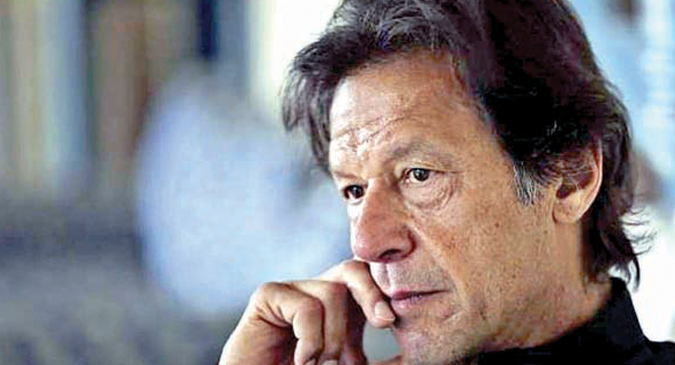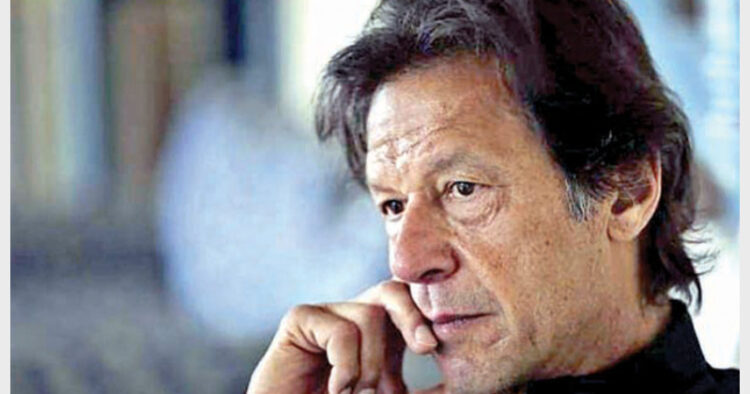Santosh Verma

On March 1, the Pakistan Bureau of Statistics (PBS) said that inflation measured by the Consumer Price Index (CPI) increased to 8.21 per cent in February 2019, which was at the level of 3.8 per cent in the same month last year. For the past some time, there has been a tremendous devaluation of the rupee of Pakistan, which has fallen to 33 per cent against the dollar in the last one year. Its natural side effect also has its foreign currency reserves, which has seen a major fall and Pakistan has been facing a major crisis of balance of payments and its moving forward.
- Pakistan’s inflation is highest in the Indian subcontinent, including India, Bangladesh and Nepal. There has been a reported decline of about $ 7 billion in foreign exchange reserves, which is enough only to cater for a month’s imports.
- The figures of Asian Development Bank, quotes the rate of increase in GDP growth of Pakistan is currently 4.8 per cent, which is less than Nepal (5.5 per cent). Pakistan’s latest GDP figures slipped below 5.4 per cent in 2017 and 5.8 per cent in 2018.
- Due to the rising rate of inflation, it is estimated that the Pakistan Government can reject the Senate’s proposal to increase the salaries of all government employees by 10 per cent as the fiscal situation has become very pitiable.
Clothing and footwear, food and non-alcoholic beverages and other goods, including goods and services, have become expensive in the range of 4.52-9.87 per cent. Many items used in daily food like tomato, ginger, beef, sugar, tea, mutton, jaggery, ghee, fish, moong dal, eggs, cooking oil, rice, gram dal, gram whole fresh milk and wheat prices Has increased from 3.21 per cent to 179.4 per cent. PBS said that the average rate of inflation for the first eight months (July-February) of the current financial year was 6.46 per cent, where transportation (16.81 per cent) and education (11.61 per cent) were the two largest categories of this increase in price. There is continued increasing in February 2019, in the original or core inflation—which is related to non-food and non-energy inflation. According to PBS, it reached almost six-year high level 8.8 per cent in February 2019 compared to 5.2 per cent in February 2018. Core inflation has maintained an ever increasing trend for the past nine months.
Inflation is Affecting Government Policies
Due to the rising inflation, it is estimated that the Pakistan can reject the Senate’s proposal to increase the salaries of all government employees by 10 per cent as the fiscal situation has become very pitiable. It is notable that in his proposals on supplementary finance (second Amendment) Bill 2019, the Senate has recommended an increase of 10 per cent in the salary of all government employees in the form of interim relief allowance to the National Assembly. However, it is common fact prevail in Pakistan’s Ministry of Finance that the government is not in a position to increase the salary of Civil Servants. Experts in the ministry believe that the government is currently working to limit the budget deficit by controlling the expenditure.
The Government also says that they have already given great relief to the salaried class by increasing the minimum income tax rate. The previous government had increased the income tax limit of Rs 4 lakh per annum to Rs 12 lakh per annum in the annual budget for the current fiscal year. A major outcome of the decline in the minimum limit of annual income tax slabs has been seen in the first seven months of the current financial year (July to January) in the tax collection as a huge deficit of Rs 191 billion. It is notable that the Department of Revenue Pakistan has collected Rs 2.06 crore in the period from July to June, 2018-19, as against Rs 1.995 trillion during the same period last year.
Future Prospects
According to a published report of Indian newspaper Business Today, the figures of Asian Development Bank, quotes the rate of increase in GDP growth of Pakistan is currently 4.8 per cent, which is less than Nepal (5.5 per cent). Pakistan’s latest GDP figures slipped below 5.4 per cent in 2017 and 5.8 per cent in 2018. Standard & Poor’s has limited Pakistan’s long-term debt rating to B-negative and has also warned that the GDP growth rate could go down to 4 per cent in 2019 and then the level of 3.5 per cent for next two years and will fall to 3.3 per cent by 2022. Currently Pakistan’s inflation is highest in the Indian subcontinent, including India, Bangladesh and Nepal. There has been a reported decline of about $ 7 billion in foreign exchange reserves, which is enough only to cater for a month’s imports.
Recently some monetary and fiscal (government) policies have been adopted to deal with the current economic crisis of Pakistan, but these measures can negatively affect manufacturing (such as factories) and economic activities (business expansion) of which The reason is that there can be a downturn in Pakistan’s economy in the fiscal year ending June 2019. At this juncture, Pakistan’s economy is facing a double challenge. The Government spending is much higher than its revenues, which results in the loss of Rs 2 trillion per year. On the other hand, Pakistan’s imports are more than double of its total exports. This “double trouble” coupled with increasing inflation “is going to be a major headache for Pakistan’s economy.
(The writer is expert on Pakistan and Balochistan)














Comments